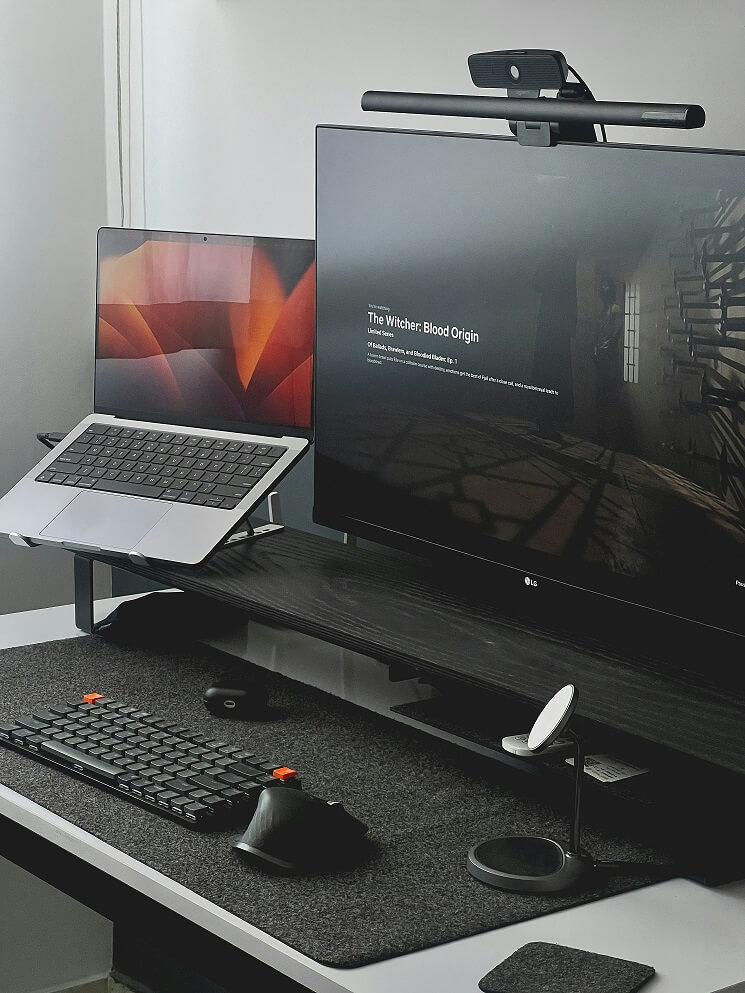In today’s fast-paced world, office environments are changing. The rise of standing desks is transforming the way we work. Traditionally, office spaces have been filled with seated desks, where employees spend long hours sitting. However, standing desks are becoming more popular. They promise to improve health, productivity, and overall well-being.
This article explores the rise of standing desks and why they are changing the workplace. We will look at their health benefits, how they boost productivity, and how to transition to a standing desk setup.
What is a Standing Desk?
A standing desk allows you to work while standing, instead of sitting all day. Many standing desks are adjustable, so you can alternate between sitting and standing. This flexibility is important because it helps reduce the harmful effects of sitting for long periods.
More people are choosing standing desks as they learn about the health risks of sitting. Prolonged sitting can lead to back pain, poor posture, and other health problems. Standing desks provide a solution by allowing you to stand and move during the day, rather than staying in one position for hours.

The Health Benefits of Standing Desks
Standing desks offer several health benefits. Here’s how they can improve your well-being:
-
Reduced Risk of Chronic Diseases
Sitting for long periods increases the risk of health problems like heart disease and diabetes. Standing desks help reduce the time spent sitting, which can lower these risks. By standing more, you encourage better circulation and metabolism, which is healthier for your body. -
Better Posture and Less Pain
Sitting for hours can lead to poor posture and back pain. When sitting, many people slouch, which can strain the spine. Standing encourages a more natural posture and can reduce back pain. This helps improve spinal health and reduces discomfort. -
Increased Energy and Focus
Standing desks can help you feel more energetic. Standing increases blood flow, which can make you feel less tired and more focused. Workers who use standing desks report feeling more engaged in their work and less fatigued. -
Boosted Mood and Reduced Stress
Standing desks may also improve your mood. Sitting for too long can cause stress and anxiety. Standing promotes movement, which can release tension and improve mental well-being. People who use standing desks report feeling more positive and less stressed at work.
How Standing Desks Improve Productivity
Standing desks not only promote better health—they also help improve productivity. Here’s how:
-
Improved Focus and Mental Clarity
Standing while working can help you stay alert. When you stand, your body is more engaged, keeping you focused. Research has shown that workers who use standing desks are more likely to stay on task and get more done. -
More Collaboration and Interaction
Standing desks can increase interaction between colleagues. When people are standing, they are more likely to chat and collaborate. This leads to better teamwork and idea sharing, which can boost creativity and problem-solving. -
Better Time Management
Standing encourages movement, like walking to a colleague’s desk or taking a short break. This movement can refresh your mind and help you manage time better. Taking short breaks throughout the day can help reduce fatigue and keep you productive.
Transitioning to a Standing Desk
Making the switch to a standing desk requires some adjustment. Here are a few tips to help you get started:
-
Start Gradually
If you are new to standing desks, begin by standing for short periods. Try standing for 15 to 30 minutes each hour. Gradually increase the time spent standing as your body adjusts. -
Choose an Adjustable Desk
Many standing desks are adjustable, meaning you can easily switch between sitting and standing. An adjustable desk will help you find the best height and posture, whether you’re sitting or standing. -
Focus on Ergonomics
When using a standing desk, make sure your desk and screen are at the right height. Your monitor should be at eye level, and your arms should be at a comfortable angle. Use a footrest or anti-fatigue mat to reduce strain on your feet and legs. -
Take Breaks
Even with a standing desk, it’s important to move around. Stand, walk, and stretch regularly to avoid stiffness. Taking breaks throughout the day will help you stay energized and reduce the risk of injury.
Conclusion: The Future of Office Workspaces
The rise of standing desks represents a shift toward healthier and more dynamic work environments. As more people realize the dangers of sitting for long hours, standing desks are becoming a popular solution. These desks offer numerous health benefits, including better posture, increased energy, and reduced risk of chronic diseases.
By boosting productivity, improving focus, and encouraging more collaboration, standing desks are changing how people work. As businesses embrace these desks, employees can enjoy a more active, comfortable, and efficient workday.
In the future, standing desks will be a standard part of office setups. Their ability to improve health and productivity makes them an essential tool for modern workplaces. The transition to standing desks is more than just a trend—it’s a step toward creating healthier, more sustainable office environments.
